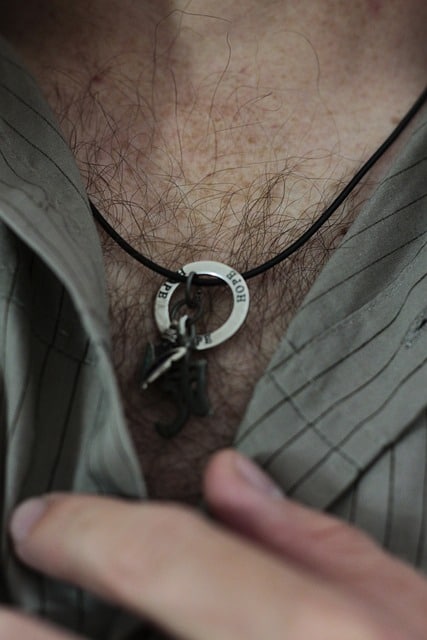We’ve all seen it – perhaps on a hot summer day when a man struts by, shirt casually unbuttoned, revealing his chest. This familiar sight stirs the question: why do men leave their shirt open in the chest? The motives behind this style choice are more intricate than you might think, as it blends layers of history, culture, fashion trends, psychology, and even health reasons. Gaining a comprehensive understanding of why men choose to wear their shirts this way can provide unique insights into the subtleties of human behavior and personal expression.
Historically, shirts were primarily functional, serving as a protective layer between the body and outer garments. However, as fashion evolved, so did the utilization of shirts. Men began leaving their shirts unbuttoned to announce status, demonstrate power, or signify approachability. The open-chest trend gained momentum in the 1970s and was frequently associated with the rebellious psyche of the youth and the era’s irreverent pop culture.
Why Men Leave Their Shirt Open in the Chest:
Cultural Influences
The sartorial choice of men leaving their shirts open to expose the chest has deep roots in cultural expressions, significantly shaped by the pulsating beats of pop culture. In the glittering world of Hollywood, charismatic figures such as John Travolta, with his electrifying dance moves in “Saturday Night Fever,” and Tom Selleck, with his suave detective charm in “Magnum P.I.,” became emblematic of this trend. Their portrayals on the silver screen did more than entertain; they influenced fashion trends and etched the image of the open-chest shirt firmly within the cultural zeitgeist.
This stylistic choice extends beyond the influence of celebrities, embedding itself with diverse connotations across different societies. In many Western cultures, leaving the chest bare is often interpreted as a mark of self-assurance and a reflection of a carefree, relaxed demeanor. This style communicates a certain nonchalance and approachability that is highly valued.
On the other hand, the cultural context shifts dramatically in Eastern societies. Here, the exposure of a bare chest takes on a more profound symbolism, often connected to ideals of bravery and virility. It’s a visual communication of strength and a nod to traditional ideals of masculinity.

Fashion Statement
Venturing into the realm of fashion, the open-chest shirt transcends being a mere article of clothing. It stands as a testament to boldness in personal fashion statements, allowing for a creative outlet of self-expression. The influence of legendary fashion designers, such as Gianni Versace, cannot be understated. Versace, in particular, was known for pushing the boundaries of menswear, often incorporating the open-chest motif in his haute couture collections. This style, prominently featured on the catwalk, reverberated through the echelons of fashion, consolidating its presence as a staple.
This trend is characterized by its chameleon-like nature, having the unique ability to evolve with the times. While it has never fully vanished from the sartorial landscape, it has continuously adapted, taking cues from the prevailing fashion narratives and reflecting the societal ebb and flow of attitudes towards masculinity and self-expression.
Psychological Perspective
From a psychological vantage point, the decision to wear an open-chest shirt is often a complex interplay of personal confidence and the desire to project a positive body image. For some men, it’s an exhibition of pride in their physical fitness, an intentional move to amplify their allure and sexual appeal.
This choice in apparel is also a powerful vehicle for shaping perceptions and creating impactful first impressions. The act of revealing one’s chest can send a strong signal about an individual’s personality traits. It suggests that the wearer may be someone who is unafraid to take risks, embraces adventure, and carries themselves with an aura of self-certainty. In essence, an open-chest shirt can be a non-verbal cue, broadcasting an open, bold, and assertive identity to the world.
Health and Comfort Factors
In the realm of personal attire, while style and personal expression are often the primary focus, the importance of health and comfort factors should not be underestimated. The choice to wear a shirt unbuttoned, for instance, extends beyond mere fashion. It serves a practical purpose in enhancing comfort, particularly in certain environmental conditions.
Wearing a shirt unbuttoned can significantly improve air circulation around the body. This increased airflow is especially beneficial during hot weather or in high-temperature environments, such as crowded places or regions with a warmer climate. The open-chest style allows for the body to cool more efficiently, providing a much-needed relief from the heat.
Moreover, this practice may help in reducing excessive sweating, a common issue in hot conditions. By allowing air to circulate freely, the skin remains drier, which can prevent prolonged dampness. This is not only a matter of comfort but also of health. Prolonged skin dampness can lead to various skin issues, including rashes and fungal infections. Ensuring adequate ventilation by wearing clothing in a way that allows the skin to breathe can mitigate these risks.

Misconceptions and Stereotypes
The decision to wear an open-chest shirt, like any visible personal style choice, can unfortunately give rise to stereotypes and misconceptions. This style choice is often unfairly associated with certain personality traits such as overconfidence, narcissism, or being overly flirtatious. These assumptions are not only unjust but also reflect a broader issue of societal judgment based on appearance.
These notions often stem from outdated gender norms and stereotypical interpretations of personality. For instance, an open-chest shirt on a man might be perceived as a sign of machismo or an attempt to display masculinity, while the same style on a woman might be unfairly judged in a different, often more critical light. Such stereotypes are a product of cultural conditioning and do not reflect the true intentions or character of the individual.
It’s crucial to challenge and debunk these myths. Clothing choices, such as wearing a shirt unbuttoned, should be seen as personal decisions that are often completely unrelated to one’s character traits or an intention to adhere to or challenge societal norms. People choose their style based on a variety of reasons, including comfort, personal taste, cultural influences, or simply because they like a particular look. Assigning character judgments based on such choices is not only unfair but also perpetuates harmful stereotypes.
Understanding and respecting personal style choices as individual expressions unrelated to stereotypical character traits is essential in fostering a more open and accepting society. This approach allows for diversity in expression without the burden of misplaced judgments and stereotypes.
Conclusion
In conclusion, the act of men leaving their shirt open in the chest may seem simple at first glance, but it is interwoven with complexities of history, culture, fashion, psychology, and health. It serves as a reminder that personal style choices often carry deeper connotations beyond surface-level observations. So, the next time you see a man confidently strutting around with his chest partially revealed, remember the rich tapestry of factors that might have influenced his choice.
















